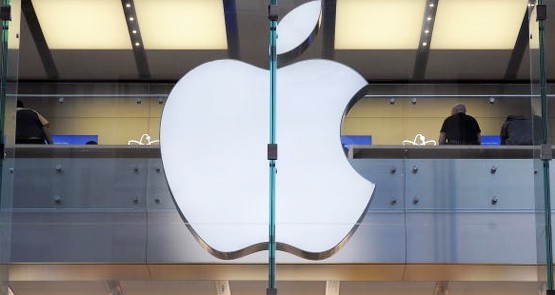
Wakey, wakey, galahs. The economic debate reawakens this week with the release of the December quarter Consumer Price Inflation figures on Wednesday ahead of next Tuesday’s first Reserve Bank board meeting of the year. Most forecasts suggest an inflation rate of 0.3% for the quarter and around 1.5% for 2015. Underlying inflation will be around 0.5% with the annual rate just over 2%. In fact it was a year ago that the RBA surprised with a rate cut at its February meeting. This time around, a rate cut is given little chance. The economy, especially the labour market, has improved since then.
The US Federal Reserve also meets this week and there won’t be a sniff of “rate rise looms” from the chattering galahs because of the way markets have stumbled at the start of 2016. In fact most forecasters now wonder if there will be another rate rise this year, although a recovery in sentiment could change that in a matter of weeks, especially if the slide in oil prices is halted. The first estimate of fourth-quarter growth for the US on Friday is likely to be weak, leading to more calls for no more rate rises this year. The Bank of Japan meets on Friday, but there is no reason for another sugar hit from that central bank, but the day before the Reserve Bank of NZ might surprise with a rate cut (to go with the four last year) after consumer price inflation fell into deflation in the December quarter. — Glenn Dyer
An Apple a quarter? Apple’s first-quarter earnings report around 8am on Wednesday will be the big test for investors in the US and around the world, more so than Netflix’s overall solid figures were last week. In fact it’s more than Apple — also reporting this week are Amazon, Google, Facebook, Microsoft. With Netflix, these stocks helped hold up the US market, even though hundreds of other stocks were falling (all are very large cap stocks and their price movements influence market measures more than the small stocks do). But when they started stumbling, the markets started sliding — with the plunge in oil prices making things worse. Last week Netflix produced better-than-expected figures about its international growth.
Now the test this week is Apple. It’s fiscal first-quarter is historically the company’s strongest period because of the holiday-selling season, but US analysts have been cutting their expectations for the results because of fears of a weaker-than-expected performance for the iPhone 6s models. The key will be the performance in the huge Chinese market, and some analysts claim to have detected a slowdown in activity among some of the company’s component suppliers in recent weeks, leading to a sell-off in Apple shares. That has had the shares retreat by more than 15% in the last three months, versus a 7% fall for the Dow. — Glenn Dyer
Clive’s accounting. It’s another version of Shakespeare’s “what’s in a name?” line from Romeo and Juliet. In that, Juliet is talking about a rose and the surnames of Romeo and herself. This morning we are a talking about something a little less refined: the identity of the company that owns Clive Palmer’s Townsville nickel refinery. Fairfax Media reports that there is an ocean of difference between the company that is now in administration, Queensland Nickel Pty Ltd, and the actual owners of the assets: two companies called QNI Metals Pty Ltd and QNI Resources Pty Ltd. Both companies own the refinery and neither is in administration, according to a story by Australian Financial Review reporter Amanda Saunders.
She points out that while it has been widely observed that Palmer’s Queensland nickel refinery fell into the hands of administrators last week, it did not.
“Instead, a shell company with no material physical assets called Queensland Nickel Pty Ltd was put into voluntary administration, with FTI Consulting appointed to the job on Monday last week, shortly after 237 workers at the refinery services were laid off.”
Saunders goes on to quote a Sydney insolvency lawyer, Beau Deleuil who was quoted as saying “the use of the structure in which Queensland Nickel operates Mr Palmer’s refinery, but does not own any of the refinery assets, employs a well-known technique for insolvency asset protection. ”
“When things are going well, everyone gets paid and no one’s the wiser,” Deleuil, a Sydney-based partner at Quinn Emanuel Urquhart & Sullivan, said.
“The money flows out to the asset owning company, while the operating entity retains just enough to pay its debts. But when things go badly, and creditors aren’t getting paid, the retained profits and the major assets are all protected in a separate entity, and the creditors are left out in the cold.”
“While Queensland Nickel Pty Ltd does employ all the workers, contracts suppliers, and owes millions to creditors, it does not actually own the assets.”
Saunders says this structure could leave the refinery and Palmer’s two companies outside of administration — “and with no or few liabilities”. In fact Saunders writes “Clive Palmer could walk away from the administration linked to his Queensland Nickel refinery without losing the assets and leave creditors out in the cold”.
Given this structuring, it is not hard to understand why the Queensland and federal governments wouldn’t lend any money to Clive. — Glenn Dyer







Crikey is committed to hosting lively discussions. Help us keep the conversation useful, interesting and welcoming. We aim to publish comments quickly in the interest of promoting robust conversation, but we’re a small team and we deploy filters to protect against legal risk. Occasionally your comment may be held up while we review, but we’re working as fast as we can to keep the conversation rolling.
The Crikey comment section is members-only content. Please subscribe to leave a comment.
The Crikey comment section is members-only content. Please login to leave a comment.